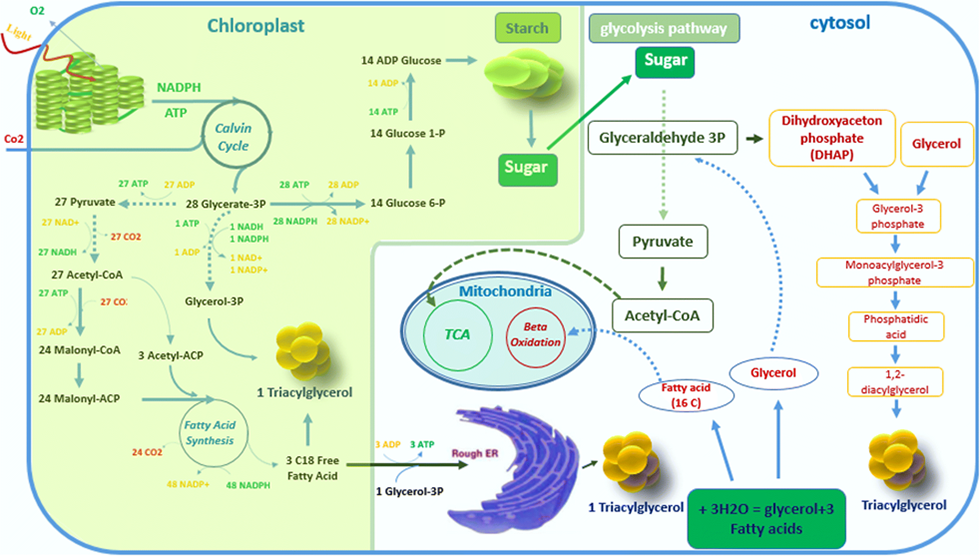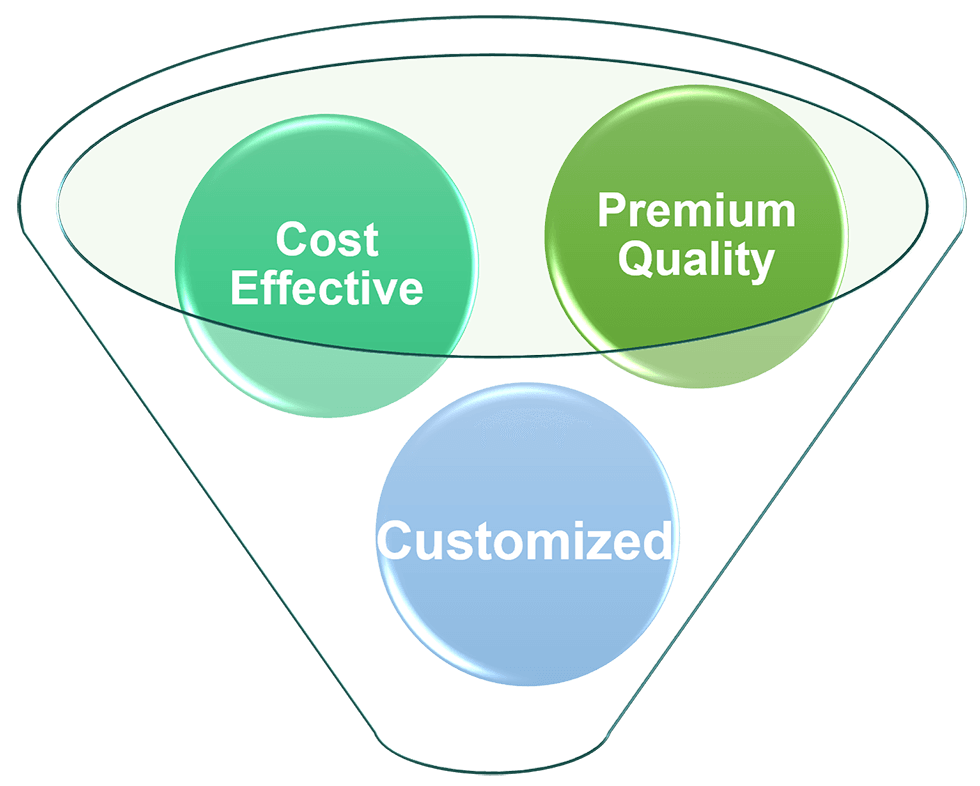Fatty Acid Production Service from Algae
The lipid metabolism of algae has very important roles in practical applications, such as the production of omega-3 fatty acids like EPA (Eicosapentaenoic Acid) and DHA (Docosahexaenoic Acid).
As a professional CRO with years of experience in algae research, Lifeasible is capable to provide quality algal fatty acid production services and subsequent fatty acid extraction services.
Introduction to Omega-3 Fatty Acid
Omega-3 fatty acids, also known as ω-3 fatty acids or n-3 fatty acids, are polyunsaturated fatty acids. They are broadly distributed in nature and are critical components of lipid metabolism in animals and play an important role in the human diet and human physiology.
Three types of omega-3 fatty acids involved in human physiology are ALA (Alpha-Linolenic Acid), EPA, and DHA. ALA is found in plants, whereas DHA and EPA are found in algae and fish.
Fatty Acid Metabolism of Algae
As one of the model algae best studied at the molecular level, Phaedactylum tricornutum is widely used in fatty acid production. The unweighted co-expression network demonstrates 106 genes encoding enzymes linked to fatty acid metabolism and the tricarboxylic acid (TCA) cycle.
 Fig.1 Simplified photosynthesis process. (Alishah Aratboni, et al., 2019, Microbial Cell Factories)
Fig.1 Simplified photosynthesis process. (Alishah Aratboni, et al., 2019, Microbial Cell Factories)
Omega-3 Fatty Acid Synthesis in Algae
The amount of omega-3 fatty acids produced by algae rely on environmental conditions. Exposing algae to environmental stresses such as nitrate starvation, increased salinity, changes in light intensity or changes in the amount and composition of carbon can increase fatty acid synthesis and accumulation, as well as the composition of omega-3 fatty acids.
For example, under mild growth conditions, the EPA content of eustigmatophyceae Nannochloropsis is 1.6% of the cell dry weight, whereas EPA content can reach 2.6% (cell dry weight) when eustigmatophyceae Nannochloropsis are exposed to high illumination and nitrogen limitation conditions.
Our Services
As a professional CRO company, Lifeasible can provide fatty acid production services from algae for our clients. Two strategies are mainly involved in fatty acid production improvement. We are capable to provides both two strategies to meet your needs.
- Increase the Content of Desired Fatty Acids per Unit of Biomass
Selection/breeding and metabolic engineering can be used to enhance fatty acid yield. We provide excellent genetic engineering services and professional selection processes to improve fatty acid production. Besides, nitrate starvation, increased salinity, and other methods are effective ways to increase the content of fatty acids per unit of biomass. - Increase the Biomass Density of the Given Strain
Optimization of growth conditions is another effective way to increase n-3 fatty acids production. We are capable to optimize physical growth conditions by different approaches to increase fatty acid production.
In addition, we provide several algae strains to serve as cell factories. The main genus of commercial microalgae so far is Chromista.
| EPA-producers |
|
| DHA-producers |
|

Why Choose Us
Lifeasible has been dedicated to the study of the biosynthesis of algae for many years and is able to provide high-quality services and advance the research projects of our clients. Please contact us for more information.
Reference
- Alishah Aratboni, H., Rafiei, N., Garcia-Granados, R., Alemzadeh, A., & Morones-Ramírez, J. R. (2019). Biomass and lipid induction strategies in microalgae for biofuel production and other applications. Microbial Cell Factories, 18(1), 1-17.
Our services are for research use only and not for any clinical use.